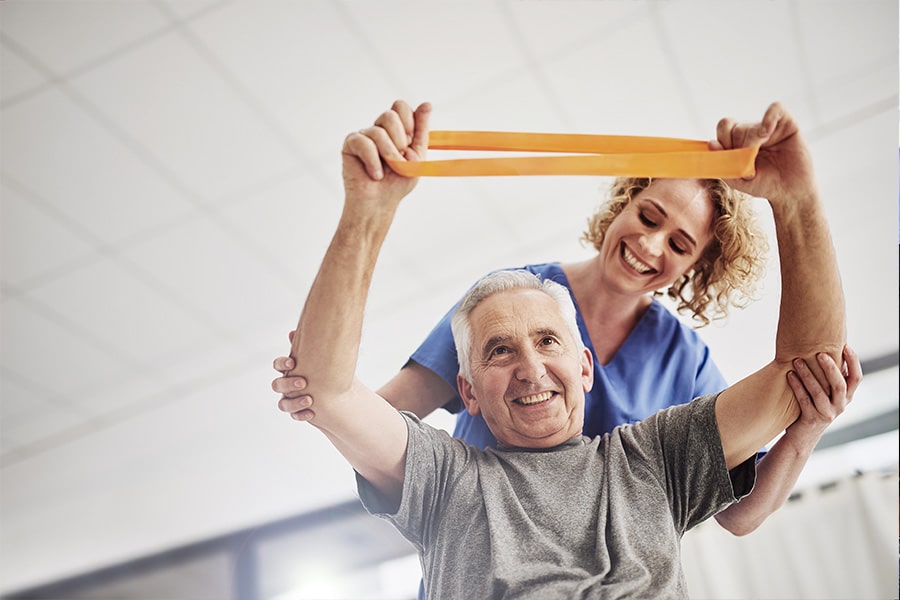Stroke is a significant health concern in Australia, with devastating consequences for the affected individuals and their families.
More than 445,000 Australians live with the effects of stroke (The Australian Institute of Health and Welfare).
The economic burden of stroke is also substantial, amounting to $6.2 billion in direct financial costs and an additional $26 billion in premature mortality and lost wellbeing due to short and long-term disability (Deloitte 2020).
While much attention is given to the acute phase of stroke care, including the critical hours and days following the event and the hospital admission period, there is a growing recognition that post-hospitalisation rehabilitation and support are equally vital. Dr Kate Scrivener APAM MACP, a researcher and senior lecturer in physiotherapy at Macquarie University, points out that we should not overlook the months or years after a stroke when individuals are back in their communities, striving to regain independence and functionality.
With extensive training in the management of neurological conditions, Bodyright Healthcare physiotherapists are highly skilled at crafting and delivering rehab at home programs. The comprehensive strategies deal with the acute and chronic symptoms of stroke, as well as delivering ongoing education to the stroke survivor and their families.
The Importance of Rehab at Home:
Rehabilitation after a stroke plays a pivotal role in maximising recovery and improving the quality of life for stroke survivors. Traditional approaches to rehabilitation have often involved in-patient care or attending outpatient facilities. However, an emerging and increasingly effective approach is immediate and ongoing rehab at home.
Immediate rehab at home is the provision of rehabilitation services soon after the stroke event, in the comfort of the individual’s home environment. This approach aims to kickstart the recovery process early and prevent secondary complications. On the other hand, ongoing rehab at home refers to the continuation of rehabilitation efforts after the acute phase, allowing individuals to receive personalised care and support as they reintegrate into their communities.
Benefits of Home-Based Rehab:
- Personalised Care: Home-based rehab programs allow your physiotherapist to tailor treatment plans based on the unique needs and challenges faced by each stroke survivor. This personalised approach enhances the effectiveness of the rehabilitation process, as it targets specific areas that require attention, such as mobility, strength, balance, and coordination.
- Familiar Environment: The home is a familiar and comfortable space for stroke survivors, reducing the anxiety and stress associated with adapting to a new clinical setting. Being in a familiar environment can also improve motivation and engagement during therapy sessions.
- Increased Independence: By focusing on activities of daily living, home-based rehab programs help stroke survivors regain functional independence. The ultimate goal is to enable them to perform essential tasks on their own, enhancing their self-esteem and reducing reliance on caregivers.
- Family Involvement: Family members play a crucial role in the recovery journey of stroke survivors. In a home-based rehab program, family members can actively participate in therapy sessions, learn proper techniques to assist their loved ones, and provide ongoing support beyond scheduled therapy visits.
- Cost-Effectiveness: Home-based rehab programs can be more cost-effective than traditional in-patient care. By reducing the length of hospital stays and minimising the need for specialised facilities, it helps lower the overall healthcare costs associated with stroke rehabilitation.
Implementing the Program:
The success of immediate and ongoing rehab at home relies on a collaborative approach between your physiotherapist, medical professionals, family/caregivers, and stroke survivors themselves.
The Essential Program Components:
- Comprehensive Assessment: The journey begins with a thorough physiotherapist assessment. This assessment helps identify the specific impairments and functional limitations of the stroke survivor, serving as the basis for designing a personalised rehabilitation plan.
- Goal Setting: Setting realistic and achievable goals is essential for tracking progress and maintaining motivation. Your physiotherapist will work closely with stroke survivors and their families to establish short-term and long-term goals that align with the individual’s aspirations and abilities.
- Functional Movement Retraining: The core of the rehab plan is a customised program based on the functional movement deficits or changes that have resulted from the stroke. The treatment intervention may focus on improving strength, balance, flexibility, coordination and tone control.
- Adaptive Equipment and Assistive Devices: Depending on the individual’s requirements, your physiotherapist may recommend and train the use of adaptive equipment and assistive devices to enhance independence and safety.
- Regular Follow-ups: Continuous monitoring and follow-up assessments are crucial to adapt the rehab program to the survivor’s progress and changing needs. Regular communication between the physio, the rest of the allied healthcare provider and the medical team ensures that any issues are promptly addressed.
Immediate and ongoing rehab at home represents a transformative approach to stroke rehabilitation. By placing the focus on the months and years following the stroke event, this program empowers individuals to regain their independence, rebuild their lives, and reintegrate into their communities. The collaboration between physiotherapists, allied and medical healthcare professionals, caregivers, and stroke survivors themselves is the key to a successful and holistic model for stroke rehabilitation.
At BodyRight Healthcare we continue to improve and expand these home-based programs so we can move closer to a future where stroke survivors are better equipped to overcome the challenges of disability and live more fulfilling lives.




